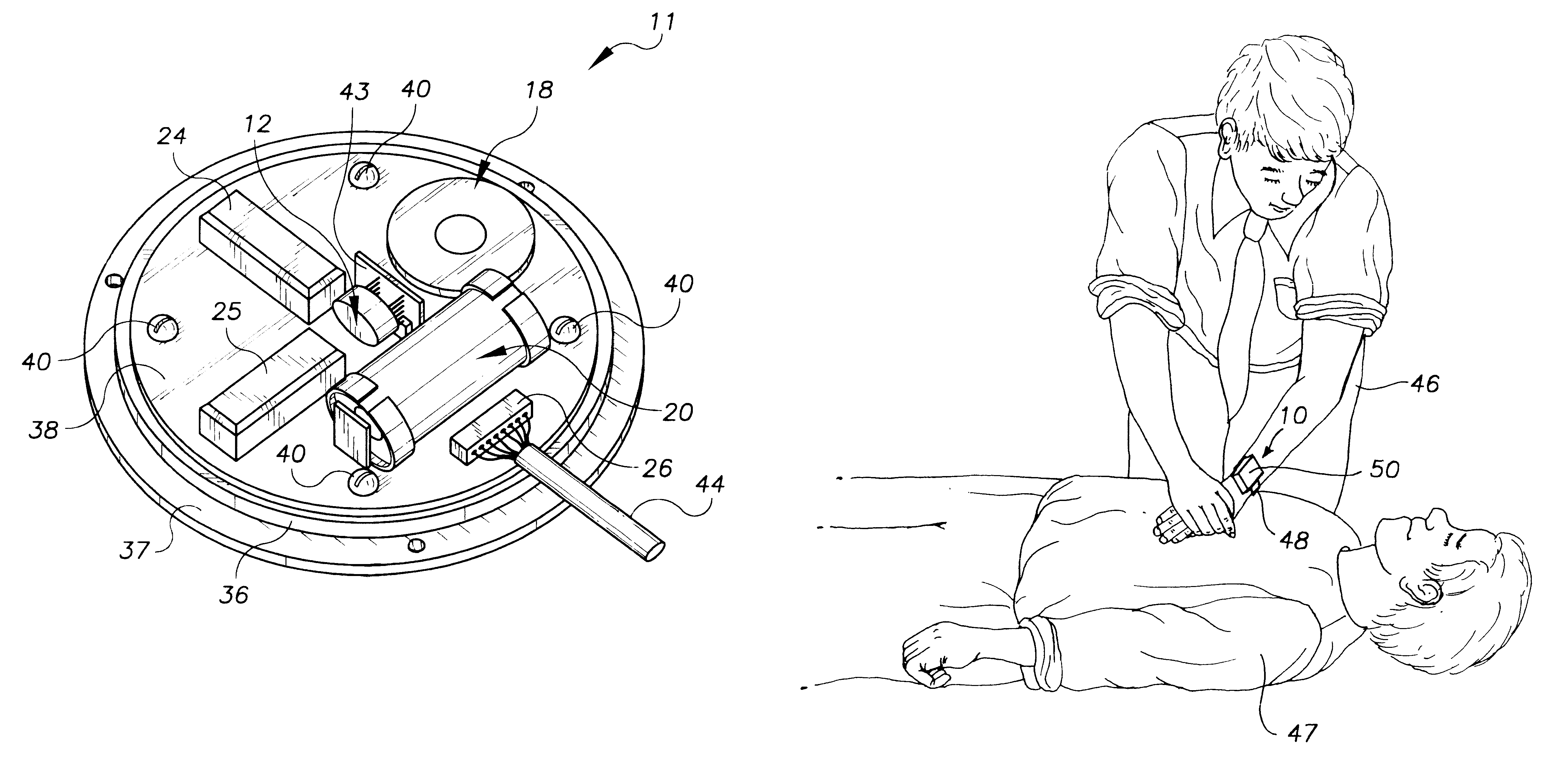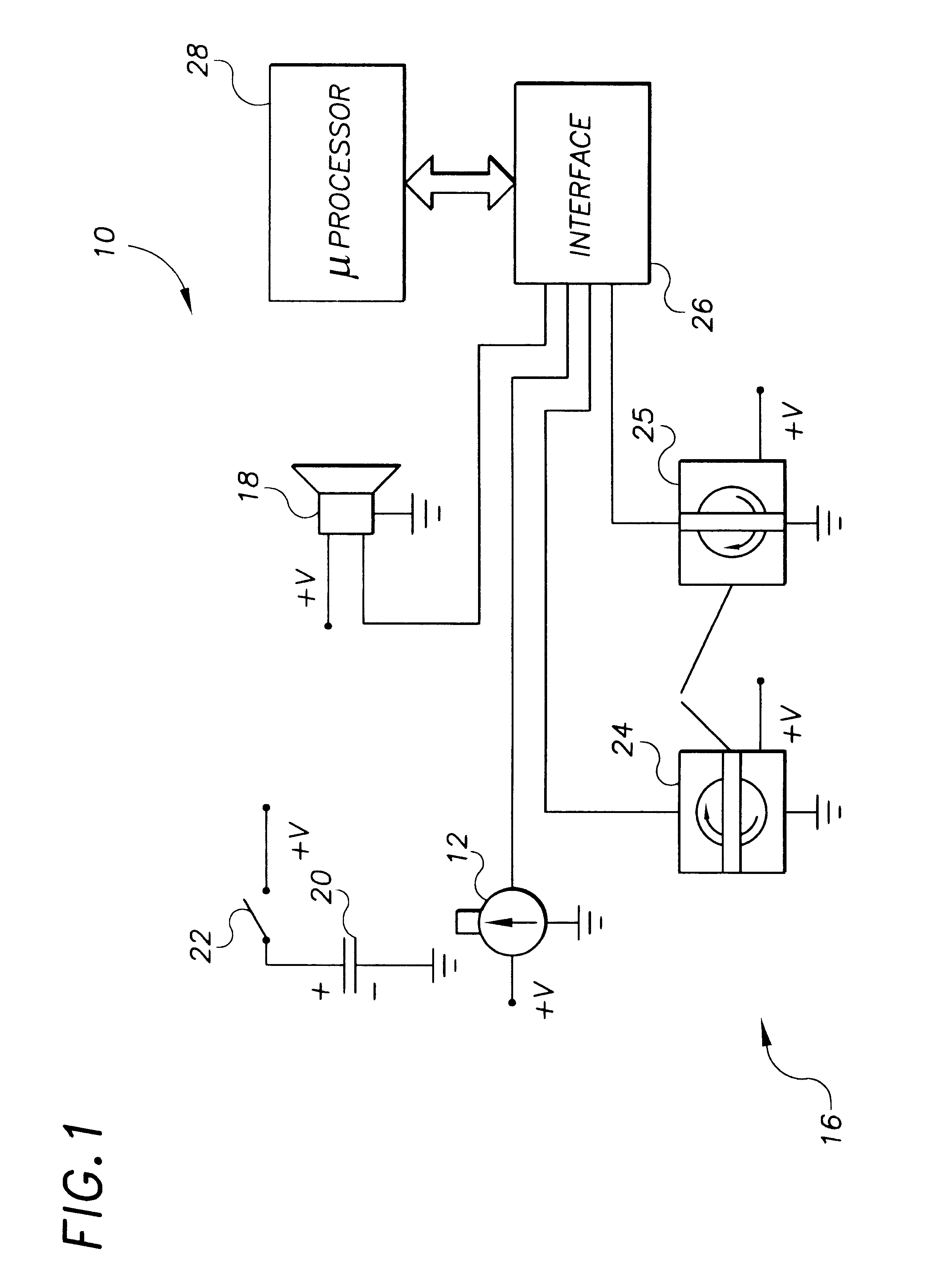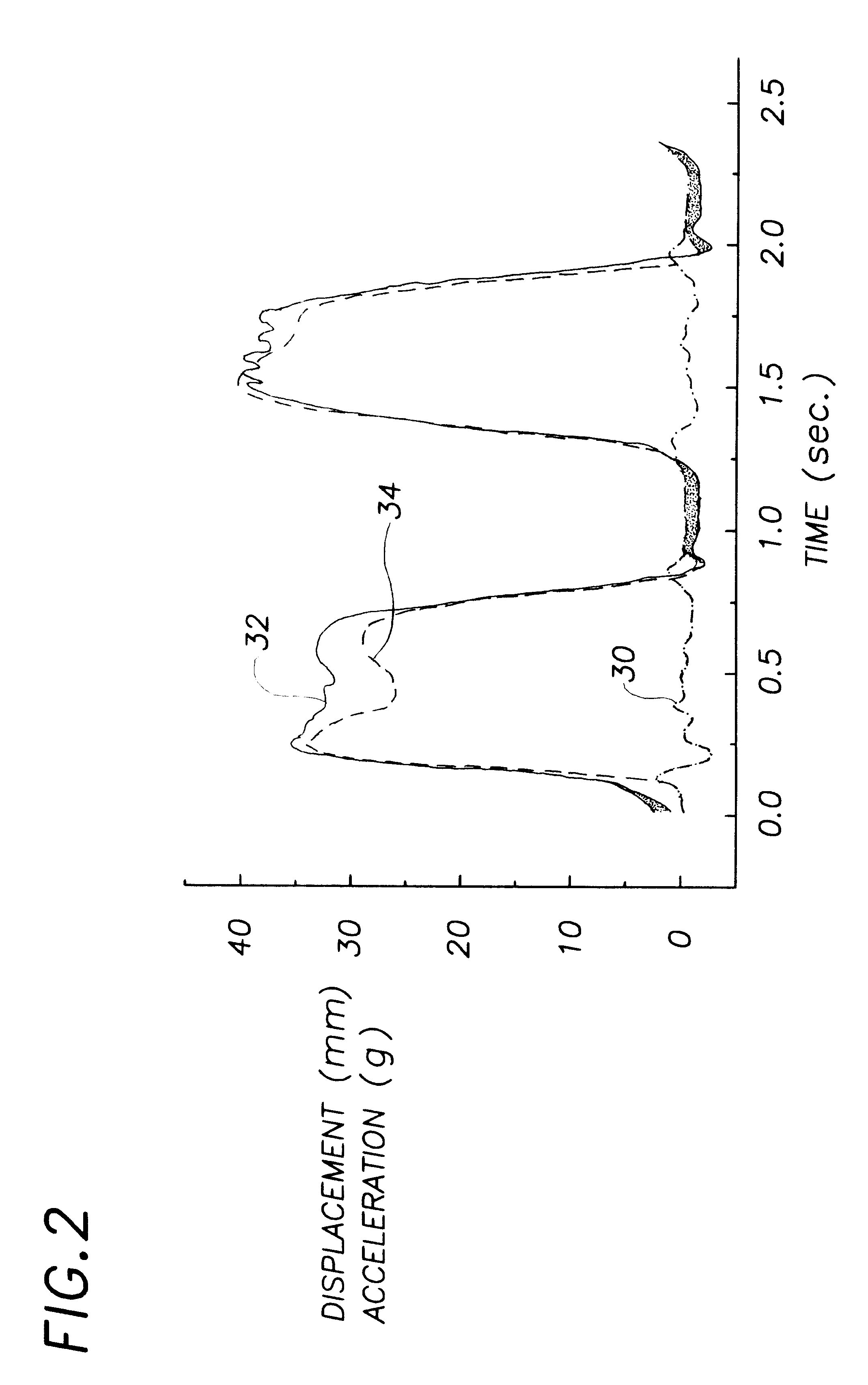CPR chest compression monitor
a chest compression and monitor technology, applied in the field of chest compression monitors, can solve the problems of cpr survival rate of 15%, limited success of current conventional cpr techniques introduced in 1960, and the inability to overestimate the importance of improving resuscitation techniques
- Summary
- Abstract
- Description
- Claims
- Application Information
AI Technical Summary
Benefits of technology
Problems solved by technology
Method used
Image
Examples
Embodiment Construction
FIG. 1 is a schematic representation of one embodiment of a hand-held CPR chest compression monitor 10 for measuring the rate and depth of chest compressions during the administration of CPR. The illustrated monitor 10 is a specific implementation of a monitoring system for measuring and prompting chest compressions to facilitate the effective administration of cardiopulmonary resuscitation (CPR). The system comprises a displacement detector and a signaling mechanism. The displacement detector produces and outputs a displacement-indicative signal indicative of the displacement of a CPR recipient's chest toward the recipient's spine. The signaling mechanism provides chest compression indication signals directing a chest compression force applied to the chest and a frequency of compressions to bring and maintain the frequency and chest displacement parameters within desired ranges. The monitoring system may be further provided with a tilt compensator comprising a tilt sensor mechanism...
PUM
 Login to View More
Login to View More Abstract
Description
Claims
Application Information
 Login to View More
Login to View More - R&D
- Intellectual Property
- Life Sciences
- Materials
- Tech Scout
- Unparalleled Data Quality
- Higher Quality Content
- 60% Fewer Hallucinations
Browse by: Latest US Patents, China's latest patents, Technical Efficacy Thesaurus, Application Domain, Technology Topic, Popular Technical Reports.
© 2025 PatSnap. All rights reserved.Legal|Privacy policy|Modern Slavery Act Transparency Statement|Sitemap|About US| Contact US: help@patsnap.com



